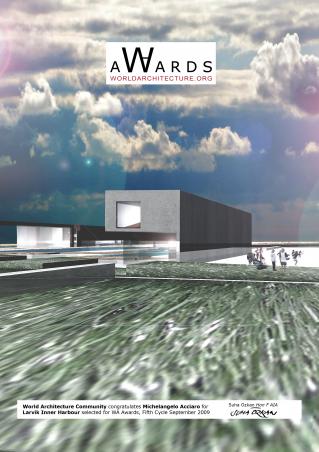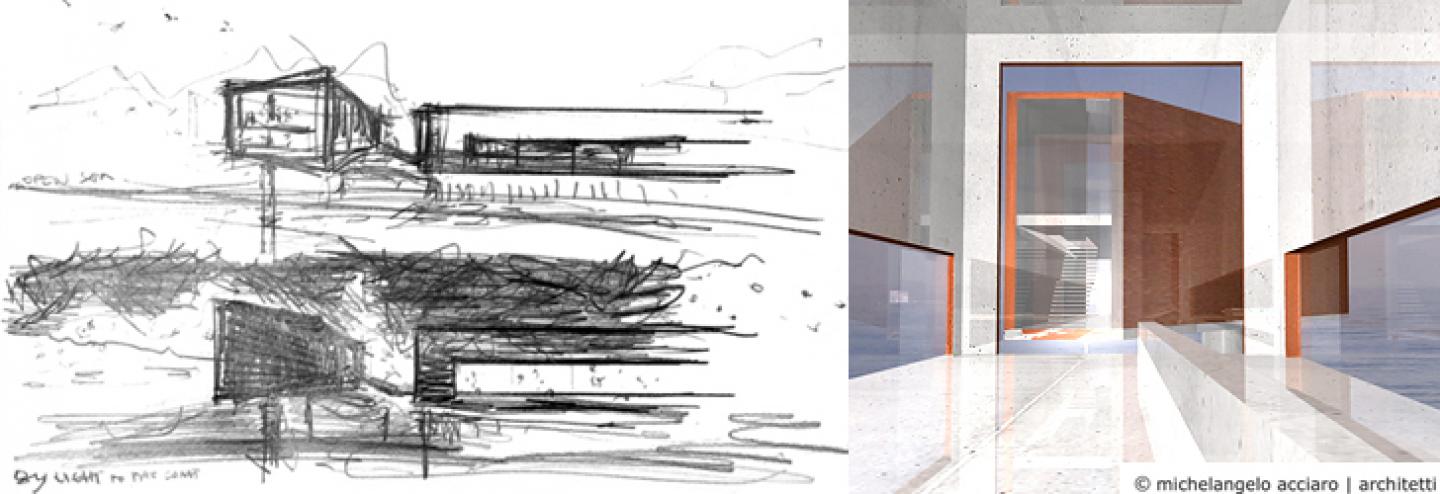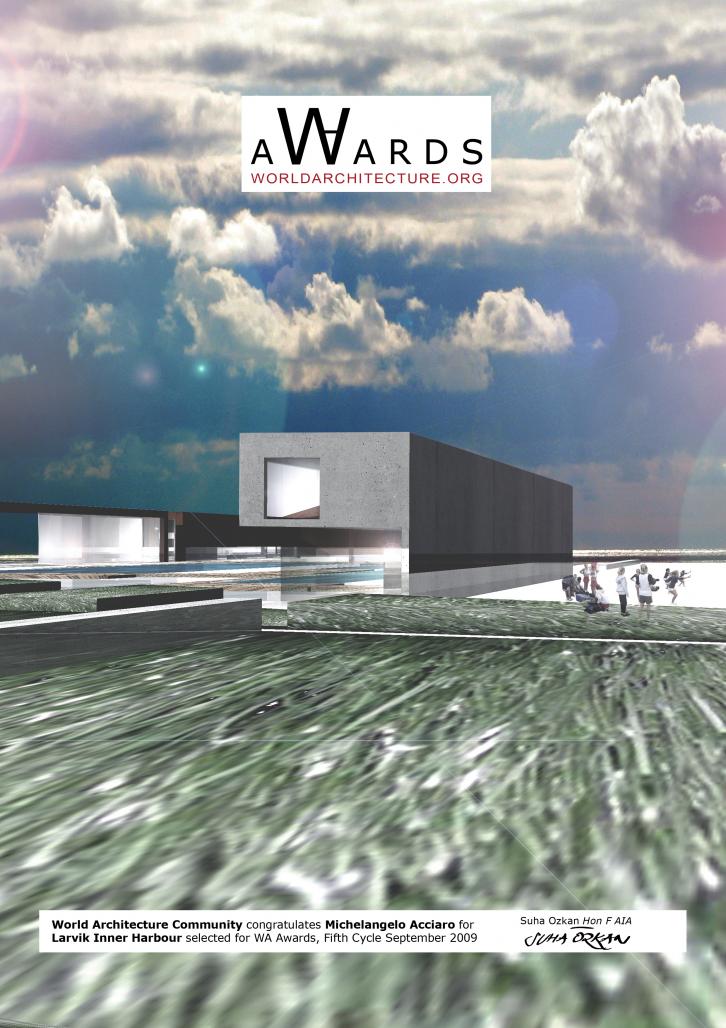There’s the North, there’s the far North, and there’s the southern part of the North. The southern part of the North is not the North. The North reasons and proceeds. The North contemplates itself and tells its own tale: its South, always rough but far away from zero, forms an open door, letting in a milder climate, creating a breeding ground for new inspirations. |
Reclaim the sea:
Our ‘Earth drifts’ design is influenced by the already existing movements of Larvik and the Inner Harbour with its moles and jetties. A network of visual connections, bridges and paths generates a dynamic interface with the adjacent areas, the town centre and its main square, articulating a transition between the town and the waterfront. As a result we propose symbolic and functional gateways and public crossings over the barrier of the railway tracks which presently divide the town centre and the seaside. Two new citizen’s bridges – one lined with shops and the other one attached to a new public library – span the tracks connecting the northern part of the town with the fjord. These new bridges, further intersections and walkways are directed towards the sea and towards new horizons, opening up the town centre to future perspectives. |
The Water Park:
The main idea in our concept is a Water Park offering a direct contact to the sea: Recreational and intellectual activities, such as taking a walk, swimming, thinking and learning, drinking and eating will take place in front of the open horizon while smelling a fresh sea breeze. Enclosed by rows of trees - forming a barrier to the railway tracks - our landscape carpet is picking up loose ends, edges and corners of the surrounding buildings, streets and ‘landmarks’, interweaving them with the different movement directions across and along the site. This texture of lines emphasizes the architecture and typical shape of the small allotments and little Larvik town houses in the surroundings: the resulting pattern of linear and transversal axes forms a green lawn, characterized by slight alterations in height and divided by small pedestrian and cycle paths. One of the seaside promenades, however, will not be – as usual – located next to the sea, but cross the sea directly, making it possible to feel, smell, taste and touch the wind, the weather and the water. A rotating lookout-platform will confirm the role of the seafront and turn its head into different directions according to the season, the time of day, the sight or the weather. |
‘Floating’ pools as bridges to the sea:
Following the natural desire of bathing in the sea, we suggest a number of ‘bathing ships’ - apparently floating in the sea. The pools will be filled with preheated water, allow an unobstructed view across the sea when swimming, and be complemented with wooden bridges. The adjoining western mole will take the function of an additional sun terrace. During the winter a two-layered membrane attached on a framework running on a rail-system will be spanned over the bathing zones maintaining a combination of translucent and transparent surfaces. The space between the membranes will be filled with air to optimise insulation and guarantee a comfortable interior temperature even when it is extremely cold outside. This membrane structure will divide the ‘bathing ships’ into three separate indoor pool areas. These areas will be connected via additional boxes containing technical and service functions. Simple joints, standard materials and easy manual assembly will allow for the membrane structure to be dismantled and re-erected without additional use of a crane. |
New public library - Café - Space for changing exhibitions – Lookout-Platform:
As already described, our project is offering a large amount of recreational and intellectual activities, some of them located in buildings spread across the site: a new public library, an indoor space for changing exhibitions, a rotational lookout-point and a café. The buildings’ appearances will underline the idea of being folded out of the different lines intersecting on the site, contrasting and strengthening the landscape carpet’s geometry. Their elongated sculptures - together with the green lawn - will lean towards the fjord in a ‘choreographed’ movement, finishing in the raised head of the rotating platform, mirrored on the surface of the sea. The building’s outer skins are structures in corten, reminding the bodies of stranded ships, the typical Larvik granite or white concrete as a neutral material, especially considerable for the interiors. Wide openings will allow excellent views of the fjord. The tectonic movements of the new buildings and the park will actively bind the different parts of the town together, forming a link between the different kinds of town fabrics and the surrounding landscape, connecting them in a dynamic way. |
© michelangelo acciaro | architetti
2008
2008
Michelangelo Acciaro Architect
Collaborator: Nora Lau Dipl. Ing. Arch.
Larvik Inner Harbour by michelangelo acciaro in Norway won the WA Award Cycle 5. Please find below the WA Award poster for this project.

Downloaded 300 times.




.jpg)
.jpg)
.jpg)
.jpg)
.jpg)
.jpg)
.jpg)
